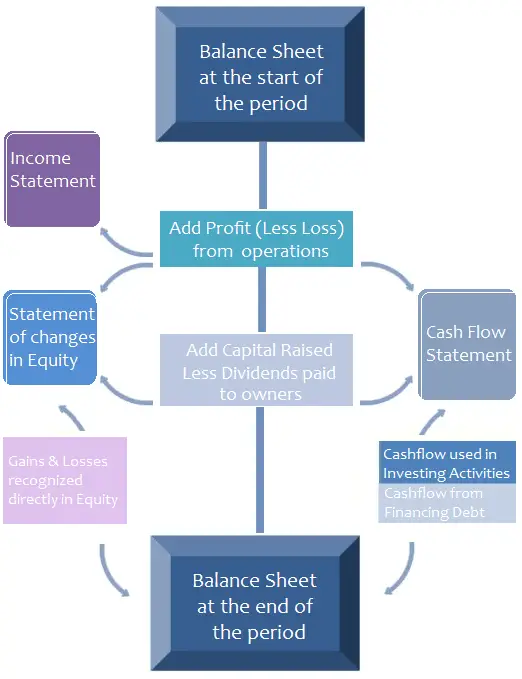Definition
Financial Statements represent a formal record of the financial activities of an entity. These are written reports that quantify the financial strength, performance and liquidity of a company. Financial Statements reflect the financial effects of business transactions and events on the entity.
Four Types of Financial Statements
The four main types of financial statements are:
1. Statement of Financial Position
Statement of Financial Position, also known as the Balance Sheet, presents the financial position of an entity at a given date. It is comprised of the following three elements:
- Assets: Something a business owns or controls (e.g. cash, inventory, plant and machinery, etc).
- Liabilities: Something a business owes to someone (e.g. creditors, bank loans, etc).
- Equity: What the business owes to its owners. This represents the amount of capital that remains in the business after its assets are used to pay off its outstanding liabilities. Equity therefore represents the difference between the assets and liabilities.
View detailed explanation and Example of Statement of Financial Position.
2. Income Statement
Income Statement, also known as the Profit and Loss Statement, reports the company’s financial performance in terms of net profit or loss over a specified period. Income Statement is composed of the following two elements:
- Income: What the business has earned over a period (e.g. sales revenue, dividend income, etc).
- Expense: The cost incurred by the business over a period (e.g. salaries and wages, depreciation, rental charges, etc).
Net profit or loss is arrived by deducting expenses from income.
View detailed explanation and Example of Income Statement.
3. Cash Flow Statement
Cash Flow Statement, presents the movement in cash and bank balances over a period. The movement in cash flows is classified into the following segments:
- Operating Activities: Represents the cash flow from primary activities of a business.
- Investing Activities: Represents cash flow from the purchase and sale of assets other than inventories (e.g. purchase of a factory plant).
- Financing Activities: Represents cash flow generated or spent on raising and repaying share capital and debt together with the payments of interest and dividends.
View detailed explanation and Example of Cash Flow Statement.
4. Statement of Changes in Equity
Statement of Changes in Equity, also known as the Statement of Retained Earnings, details the movement in owners’ equity over a period. The movement in owners’ equity is derived from the following components:
- Net Profit or loss during the period as reported in the income statement.
- Share capital issued or repaid during the period.
- Dividend payments.
- Gains or losses recognized directly in equity (e.g. revaluation surpluses).
- Effects of a change in accounting policy or correction of accounting error.
View detailed explanation and Example of Statement of Changes in Equity.
Link between Financial Statements
The following diagram summarizes the link between financial statements:

Financial Statements Template
Download free blank excel template of business financial statements.
